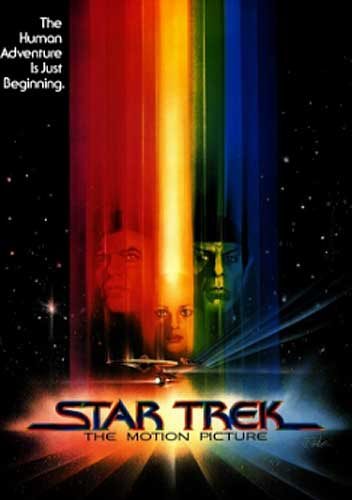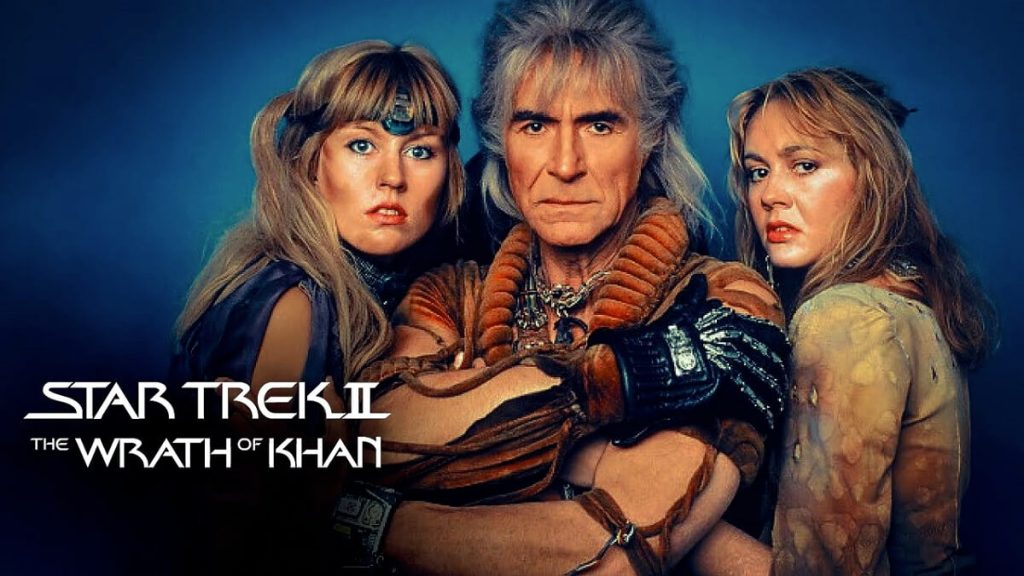If you were to ask Star Trek fans which was the best film to be based on that much-beloved 1960s television series, “Wrath of Khan” would undoubtedly be their answer.
And as to who should get the lion’s share of the credit for this 1982 Paramount Pictures release actually being exciting & entertaining (which then made “Star Trek II” a decided improvement over that studio’s initial attempt to transfer Kirk & Co. to the big screen, 1979’s “Star Trek: The Motion Picture”), Trekkers would be quick to point toward Nicholas Meyer. Who not only directed “Wrath of Khan” but also did an uncredited rewrite of this film’s screenplay. Which added some much-needed humor & emotional heft to this Horatio Hornblower-inspired space adventure.
But to hear William Shatner talk, there wouldn’t have been a “Star Trek II” at all if it hadn’t been for Yvette Bluhdorn.

“And who’s Yvette Bluhdorn?,” you ask. Well, as Shatner recently revealed as part of an exclusive introduction that he filmed for the 35th anniversary edition of “Star Trek II: The Wrath of Khan” (FYI: Fathom Events is screening the Director’s Cut of this Nicholas Meyer movie in theaters all over the country later tonight), Yvette was the wife of Charlie Bluhdorn. And Charlie was the founder & chief executive officer of the Gulf & Western Company. Which – at that time, anyway – owned Paramount Pictures.
“And after ‘Star Trek: The Motion Picture’ came out and didn’t produce Star War-sized profits, Paramount Pictures management really didn’t want to make another movie,” William explained. “But the CEO’s wife was a Star Trek fan. And after she saw the first Star Trek movie, she turned to her husband and said ‘They have to make another one.’ So that’s what the CEO told Paramount Pictures management. ‘You have to make another one.’ “
Which really wasn’t something that then-Paramount Pictures president Michael Eisner wanted to hear. He was still smarting from what had happened on “Star Trek: The Motion Picture.” A project that had initially been greenlit with a $15 million budget but that – due to cost over-runs that resulted from having to replace this film’s original FX team in mid-production. Not to mention start shooting without a finished script – ultimately wound costing Paramount $46 million to produce.

When the topic of “Star Trek: The Motion Picture” comes up today, executives who actually worked on this project show the cinematic equivalent of post-traumatic stress syndrome. Take, for example, Jeffrey Katzenberg. Who was Barry Diller (i.e., the then-Chairman of Paramount Pictures)’s assistant while “ST:TMP” was being shot. As this Robert Wise film began to spiral out of control / fall further & further behind schedule, Diller personally assigned Katzenberg to the project in an effort to get this big screen Star Trek movie back on track.
Years later, Katzenberg looked back on this assignment, saying that ” … on a scale of one to ten, (my) anxiety level on (the first Star Trek movie) fluctuated somewhere between eleven and thirteen. Never in the history of motion pictures has there been a film that came closer to not making it to the theatres on its release date.”
On a personal note, I can actually vouch for Katzenberg’s claim. I was managing a cinema back on December 7, 1979. Which was the day that “Star Trek: The Motion Picture” was supposed to open in some 859 theaters around the United States (which – at that time, anyway – was one of the widest releases ever attended by a studio in Hollywood).
Anyway … As I pulled those reels of film out of their can and then began splicing together our theater’s copy of “Star Trek: The Motion Picture” … Well, I can still remember their distinctive feel & smell. Largely because the print of “ST:TMP” that I was working with was still wet. Which meant that it had been dubbed out in Hollywood only the night before, thrown in its film cans & then flown out to the East Coast without first going through the obligatory drying process.
Given that so many of the people who worked on “Star Trek: The Motion Picture” had bad memories of this experience (Douglas Trumball – the visual effects master who came to Paramount’s rescue on this project – wound up being hospitalized for exhaustion right after he delivered “ST:TMP” ‘s very last FX shot less than 12 hours before this movie premiered in Washington D.C.’s MacArthur Theater on the night of December 6, 1979. It took two full weeks of bed rest before Trumball was finally able to recover), executives at the studio weren’t anxious to repeat that experience for the sequel.
Which is why – as “Star Trek II” entered its development phase – one of the very first things that Diller & Eisner did was to shove Gene Roddenberry aside. Barry & Michael felt that Gene (who had created the original “Star Trek” show back in the early 1960s as well as serving as producer of the 1979 motion picture based on that series) was the person who was most responsible for “ST:TMP” falling so far behind schedule and going so over budget. Largely because of Roddenberry’s repeated fights-for-control with that film’s director Robert Wise.
That said, Diller & Eisner recognized that fans of the original TV series would immediately be up in arms if a new Star Trek movie were to go before the cameras without “The Great Bird of the Galaxy” (Believe it or not, that was actually Roddenberry’s nickname) occupying some sort of role on this project. Which is why Gene wound up as Executive Consultant on “Wrath of Khan.” Which admittedly sounds like an impressive title. But truth be told, Roddenberry had very little input when it came to Star Trek II.
With the hope that someone who still worked on the TV side of things at Paramount could then deliver a more affordable / entertaining Star Trek film then Gene had, Barry & Michael reached out to Harve Bennett. Who had recently come over to Paramount from Columbia where he had been in charge of that studio’s TV movie division.
Given that one of the last projects that Harve had produced over at Columbia was “A Woman Called Golda” (which was a Golda Meir bio-pic for television that featured Ingrid Bergman in her final starring role. But what put “A Woman Called Golda” on Paramount’s radar was Bergman’s co-star on this project, Leonard Nimoy. Who – at this particular point-in-time – hadn’t actually agreed to appear in a Star Trek sequel) … Well, Diller & Eisner were hoping that Bennett (who Nimoy had reportedly enjoyed working with) would then be able to persuade this famously finicky actor ( who – let’s remember – back in 1975, actually wrote an autobiography entitled “I am not Spock”) to put on those pointy Vulcan ears one more time.
But what really landed Harve the gig as “Wrath of Khan” ‘s producer was when Barry & Michael took him in front of Charlie Bluhdorn. And the then-CEO of Gulf & Western (who was famous for his blunt talk) flat-out asked this veteran television producer if he could make a new Star Trek movie for ” … less than forty-five-f***ing-million-dollars?” Bennett’s reply was replied that “Where I come from, we can make five movies for that.”
Bluhdorn’s immediate response was “Do it.” Which is why Charlie was then able to go home to Yvette that night and say “Okay. I did as you asked. Paramount’s gonna make another Star Trek movie.”
These are the sorts of stories that William Shatner shares as part of his exclusive introduction to “Star Trek II: The Wrath of Khan.” Which is why – if you’re a Trekker – you might want to consider checking out Fathom Events’ 35th anniversary screening of the Director’s Cut of this Paramount Pictures production.
This article was originally published by the Huffington Post on Tuesday, September 12, 2017
